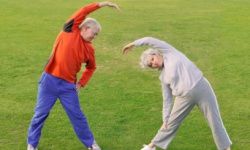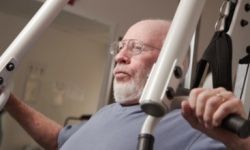Whether you're 69- 79- or 89-years-old, you're never too over the hill to begin exercising. Although you may be put off by the term, "weight-bearing exercise" is not designed to bulk up your muscles. Also called "strength training" or "resistance exercise," it's any form of physical activity in which you support your own body (for example, you perform the exercise on your feet) or you lift weight. This type of exercise is beneficial because your muscles are forced to work against gravity. What that does is increase your bone density, your muscle strength and your flexibility, as well as boost your mood and your cognitive function.
That's good because bone mass naturally decreases as we age. In fact, women will typically lose 30 to 50 percent and men 20 to 30 percent of their bone density over a lifetime. The good news is that beginning at around age 35, we can keep brittle bones and osteoporosis at bay with exercise that helps to increase bone density [source: American Academy of Orthopaedic Surgeons].
Advertisement
Try these five recommended activities to add weight-bearing exercise to your life. We'll begin by simply taking a walk.

